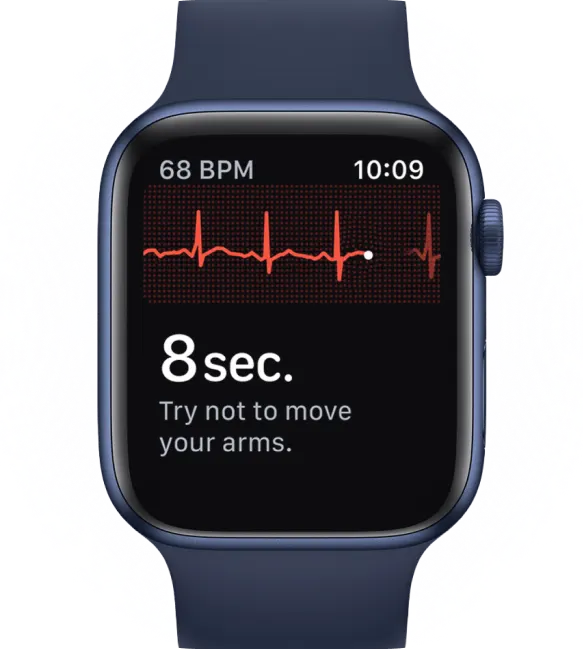Key Takeaways
Hello Heart Hero. We know that getting an atrial fibrillation (AFib) diagnosis can feel confusing and even a little scary. The good news is that finding an effective treatment for afib isn't just possible, it's something that can be shaped specifically for you, blending lifestyle changes, medications, and even advanced procedures to help you get back in control.
Your Path to Understanding AFib Treatment
Getting hit with an AFib diagnosis often opens the floodgates to questions about what’s next. You might feel a little lost or even skeptical about navigating the healthcare system, and that's completely understandable. You're in the right place.
Think of this guide as a trusted partner on your journey. We’re here to cut through the complicated medical jargon and give you clear, straightforward answers. Our goal is to arm you with the knowledge you need to feel confident and prepared.
We’ll walk through every available treatment for AFib, from simple lifestyle shifts you can make today to more advanced medical procedures. With this roadmap, you can have more productive conversations with your doctor and truly own your health journey. It's not just about managing AFib; it's about thriving with it.
You Are Not Alone in This Journey
If you're feeling isolated by your diagnosis, just remember you've joined a huge community. Atrial fibrillation is one of the most common heart rhythm disorders in the world.
In fact, an estimated 52.6 million people were living with AFib globally in 2021. That number keeps climbing as populations age and risk factors become more common. Here in the United States, there were over 6 million cases recorded in 2023, which shows just how many others are walking a similar path. You can learn more about the global impact of AFib and its market trends.
Your journey with AFib is personal, but the path has been walked by millions. Every treatment plan is built on a foundation of extensive research and the shared experiences of people just like you who have successfully managed their condition.
This collective experience has pushed medical science forward, leading to incredibly effective treatments. Let's break down the core goals that form the foundation of any modern AFib management plan:
- Restoring Control: The top priority is always to manage your heart's rate and rhythm. This helps reduce symptoms and dramatically improves your quality of life.
- Preventing Complications: A huge piece of the puzzle is lowering the risk of stroke, which is a major concern for anyone with AFib.
- Empowering You: Your active role is key. From the choices you make every day to monitoring your heart at home, you are the most important part of your long-term success.
Starting Your Treatment with AFib Medications
For many people, the first step on the path to managing AFib is medication. This is usually the first option your doctor will bring up, and getting a handle on what’s available can make the whole process feel a lot less intimidating.
Think of it as building a hand-picked support system for your heart. When you’re navigating a health journey that can feel overwhelming, understanding what these medications do and why they're being recommended puts you right back in the driver's seat. The idea isn't to just passively follow a plan, but to actively work with your doctor to find a treatment that fits your life.
Medications like beta-blockers are often a foundational choice. They play a key role in safely managing the heart’s speed, making them a go-to primary strategy.
The Two Main Goals: Rate and Rhythm Control
When we talk about AFib medications, they generally fall into two main camps, each with a very specific job. It's like having two different types of coaches for your heart team.
First up, you have rate control medications. Picture your heart as an engine that's revving way too high. Drugs like beta-blockers or calcium channel blockers act like a gentle foot on the brake. They don't necessarily fix the erratic rhythm itself, but they slow your heart down to a safer, more comfortable speed. This alone can make a huge difference in symptoms like fatigue or shortness of breath.
Then, there are rhythm control medications. These are more like a specialized mechanic trying to fix the engine’s faulty timing. Known as antiarrhythmics, these drugs work on the heart's electrical wiring to try and guide it back into a normal, steady beat (what doctors call "sinus rhythm").
The choice between focusing on rate or rhythm depends entirely on you, your specific symptoms, the type of AFib you have, and your overall health. To dig deeper into these options, you can learn more about the different types of heart medicine for AFib and how they work.
Preventing Stroke: The Critical Role of Blood Thinners
Beyond managing the heart's speed and pattern, there's another priority that’s absolutely crucial: preventing a stroke. Because AFib causes the heart's upper chambers to quiver instead of pump effectively, blood can pool there and form clots. If one of those clots breaks free and travels to the brain, it can cause a stroke.
This is where anticoagulants, more commonly known as blood thinners, come into play. That name is a little misleading; they don't actually make your blood "thinner." What they really do is slow down your body's natural clotting process, making it much harder for those dangerous clots to form in the first place.
For people with AFib, taking an anticoagulant can slash the risk of stroke by up to 60-80%. This one step is among the most powerful actions you can take to protect your long-term health from a life-changing event.
Your doctor will use a specific risk assessment to decide if you need an anticoagulant and which one is the best fit. It’s always a careful balance between preventing strokes and managing any risk of bleeding.
Finding Your Perfect Medication Match
It’s important to know that finding the right medication isn't always a one-and-done deal. What works perfectly for one person might not be the right choice for another. This is where patience and open, honest communication with your healthcare team are so important.
Here are a few things to keep in mind as you start this part of your journey:
- Side Effects Are Possible: Some people feel things like fatigue or dizziness, especially when they first start a new medication. Many of these fade over time, but always, always let your doctor know what you're experiencing.
- Adjustments Are Normal: Don't be surprised if your doctor needs to tweak your dosage or even switch medications to find that sweet spot of maximum benefit with minimal side effects.
- Consistency Is Key: For these medications to work their magic, you have to take them exactly as prescribed. Setting phone reminders or using a weekly pill organizer can make a world of difference.
Your AFib treatment is a partnership. By understanding these medication basics, you’re better equipped to ask smart questions, provide helpful feedback to your doctor, and feel more confident in the plan you create together.
Common Medications Used in AFib Treatment
To help you get familiar with the different types of drugs your doctor might discuss, here's a quick look at the main categories. Think of this as a simplified field guide to your potential heart helpers.
Each of these plays a unique and vital role. Your doctor will determine which ones are right for you based on your specific health profile and treatment goals.
Exploring Advanced Procedures for AFib
Sometimes, medications and lifestyle changes are not enough to bring your heart back into a steady rhythm. When that happens, it can be frustrating, but it is certainly not the end of the road. Your doctor might start talking about more advanced procedures, which can sound a bit intimidating.
Let’s clear up the confusion. These interventions are powerful tools that can offer significant relief when other methods fall short. Two of the most common procedures you will hear about are cardioversion and catheter ablation.

Think of these not as last resorts, but as the next logical step in finding the right treatment for afib that gives you back your quality of life. Understanding what they are, how they work, and who they are for can help you feel much more prepared and in control of the conversation.
Cardioversion: The Heart's Reset Button
Imagine your heart’s electrical system is like a computer that has frozen or is running a faulty program. Sometimes, the simplest fix is to just turn it off and on again. That is exactly what cardioversion does. It’s a way to hit the “reset button” on your heart’s electrical activity to get it back into a normal rhythm.
There are two primary ways a doctor can perform a cardioversion:
- Electrical Cardioversion: This is the one people often see on TV. While you are lightly sedated, a doctor delivers a quick, controlled electrical shock to your chest. This jolt is just enough to interrupt the chaotic AFib signals and allow your heart’s natural pacemaker to take over again. It’s a very quick process.
- Chemical (Pharmacological) Cardioversion: In this version, you are given specific antiarrhythmic medications, either through an IV or in pill form, that are designed to chemically coax your heart back into a normal rhythm. This approach is gentler but can take longer, from a few minutes to several hours, to work.
Cardioversion is often used for people who are experiencing their first episode of AFib or for those whose symptoms are particularly severe. While it can be very effective, it’s not always a permanent fix; AFib can sometimes return.
Catheter Ablation: A Precision Fix
If cardioversion is like rebooting your computer, catheter ablation is like calling in a specialist to find and fix the faulty wiring that caused the crash in the first place. This is a more involved procedure, but it offers a chance for a longer-term solution. It is designed to target the exact source of your AFib.
The root of AFib often lies in erratic electrical signals, usually coming from the areas where your pulmonary veins connect to the heart's left atrium. A catheter ablation aims to stop these signals from ever reaching the rest of your heart.
Catheter ablation works by creating tiny, precise scars on the heart tissue. This scar tissue acts as a barrier, effectively building a wall that blocks the faulty electrical impulses causing the AFib, without affecting the heart's normal function.
Here is a simplified look at what the procedure involves:
- Accessing the Heart: A specialist called an electrophysiologist inserts a thin, flexible tube (a catheter) into a blood vessel, usually in your groin, and carefully guides it up to your heart.
- Mapping the Signals: Once inside, sophisticated 3D mapping technology is used to pinpoint exactly where the abnormal electrical signals are coming from.
- Creating the Barrier: Using either heat (radiofrequency) or cold (cryoablation), the electrophysiologist creates a series of small scars around the pulmonary veins, isolating the source of the arrhythmia.
For a deeper dive into what to expect from this procedure, you can read our comprehensive guide on everything you need to know about AFib ablation.
Who Is a Good Candidate for These Procedures?
Deciding on a procedure is a very personal choice made between you and your doctor. Generally, these interventions are considered for individuals who:
- Continue to have bothersome AFib symptoms despite trying medications.
- Cannot tolerate the side effects of their AFib medications.
- Are younger and want to avoid being on long-term medication.
- Have certain types of AFib that are known to respond well to ablation.
Recovery from these procedures is typically straightforward. After cardioversion, you can often go home the same day. With ablation, you may stay in the hospital overnight for monitoring, but most people are back to their normal routines within a few days. These advanced treatments for AFib represent a major step forward, offering many people the chance to live a life free from the daily burden of symptoms.
Empowering Your Health with Lifestyle Changes
Your daily habits are one of the most powerful tools you have in your corner when managing AFib. While medications and procedures are crucial parts of the plan, the choices you make every single day build the foundation for your overall heart health. Think of them as working hand-in-hand with your medical treatments, often making them even more effective.
It's completely normal to feel a bit skeptical about the healthcare system and want to find things you can control yourself. This is where your power truly lies. Making thoughtful, consistent changes to your daily routine can make a huge difference in how you feel and how well your body handles AFib.

This isn’t about a complete life overhaul overnight. It's about taking small, doable steps that add up to big results, helping you become an active, informed partner in your own care.
Your Heart-Healthy Diet
Think of food as fuel for your heart. Giving it the right kind of fuel can help manage AFib triggers and support your entire cardiovascular system. The goal isn't about restrictive dieting, but about mindful eating.
A heart-healthy diet often focuses on:
- Fruits and Vegetables: Packed with vitamins, minerals, and antioxidants.
- Lean Proteins: Think fish, chicken, beans, and lentils.
- Whole Grains: Oats, brown rice, and quinoa for sustained energy.
- Healthy Fats: Found in avocados, nuts, and olive oil.
At the same time, it’s smart to limit foods high in sodium, processed sugars, and unhealthy saturated fats. These can contribute to high blood pressure and other AFib risk factors. To make better choices at the grocery store, it's helpful to learn how to effectively read food labels.
Gentle Movement and Consistent Exercise
Exercise can feel intimidating when you have a heart condition, but gentle and consistent activity is incredibly beneficial. It helps maintain a healthy weight, lower blood pressure, and reduce stress, all key for managing AFib.
Start slow and listen to your body. A daily walk, swimming, or some gentle yoga can be wonderful starting points. Just be sure to talk to your doctor before beginning any new exercise routine to create a plan that’s both safe and effective for you.
Remember, the goal is consistency, not intensity. A short walk every day is often more beneficial than one intense workout once a week. It’s about building a sustainable habit that supports your heart for the long haul.
Atrial fibrillation significantly increases the risk of stroke fivefold, and these strokes are often more severe. This fact alone underscores why proactive lifestyle changes are such a critical part of any effective treatment for afib.
The Power of Home Monitoring
One of the most empowering steps you can take is to monitor your heart at home. Using a wearable device like an Apple Watch or a handheld ECG monitor, you can track your heart’s rhythm on your own terms.
This isn't about becoming your own doctor. It's about gathering information. By checking in with your heart regularly, you can start to spot patterns. Maybe you see a connection between a stressful day and more palpitations, or you realize your heart is calmer after a good night's sleep.
Apps like Qaly take this a step further by connecting you with certified technicians who can review your ECGs within minutes. This gives you valuable, expert-backed information that you can share with your doctor. It transforms your appointments from simple check-ins to data-driven conversations where you are a key partner.
How to Build Your Personal AFib Treatment Plan
Figuring out AFib treatment can feel like looking at a huge menu with dozens of choices you've never seen before. It's totally normal to wonder, "Which one is right for me?" The simple truth is, there’s no single best treatment for afib, only the best treatment for you.
This is a journey you don’t have to walk alone. In fact, the best results come from you and your doctor working as a team to map out a plan that fits your life. This approach is called shared decision-making, and it puts your voice, your preferences, and your goals right at the center of your care.
You Are the Expert on You
Your doctor brings the medical knowledge, but you bring something equally vital: your firsthand experience of living in your body. Nobody else knows exactly what your symptoms feel like, how they mess with your daily routine, or what you’re hoping to get back. Is your top priority getting back to hiking without feeling winded? Or is it quieting the anxiety that comes with every palpitation?
Being clear about these things is the first step toward a truly personal plan. Your doctor needs this insight to weigh the pros and cons of each treatment option through your eyes.
Your personal goals aren't just little notes in a medical file; they're the north star for your entire treatment strategy. A plan that doesn't respect what matters most to you is an incomplete plan.
Preparing for a Productive Partnership
Walking into your doctor’s office prepared to have a real conversation can change everything. It turns you from a passive listener into an active partner in your own care. A little prep work ensures your biggest questions get answered and your concerns are truly heard.
Here’s how you can get ready for a great discussion:
- Track Your Symptoms: Keep a simple log. Note when you feel symptoms, what they feel like, and what you were doing. This data is gold for your doctor.
- List Your Goals: Write down what you want from treatment. More energy? Less worry? The freedom to travel? Get specific.
- Write Down Your Questions: It’s so easy to forget what you wanted to ask in the moment. A list makes sure you cover all your bases.
When you're thinking of questions, the more specific, the better. For a little help getting started, check out this great list of questions to ask your cardiologist about AFib. This kind of preparation transforms your appointment from a lecture into a workshop. Your ideal AFib treatment isn't just about medicine; it's about creating a strategy that honors your health, your lifestyle, and your peace of mind.
Common Questions About AFib Treatment
When you're figuring out the best path forward for your health, questions are a good thing. Especially when it comes to finding the right treatment for afib. It's only natural to have concerns or feel a little unsure about what's next. This is your space to get clear, honest answers to the questions we hear most often.
You've already learned a ton about your options, from medications and procedures to the power of lifestyle changes. Now, let’s clear up any lingering questions so you can move forward with confidence.
Can AFib Be Cured Permanently?
This is usually the first question on everyone's mind, and it comes from a place of hope. The honest answer is a little complex. While some treatments can make AFib symptoms vanish for a very long time, doctors tend to talk about "managing" it rather than a permanent "cure."
It helps to think of AFib like a chronic condition, similar to high blood pressure. The real goal is to control it so well that it doesn't get in the way of your life. A procedure like catheter ablation, for instance, can be incredibly successful. Many people who have an ablation stay AFib-free for years, and for all practical purposes, they feel cured.
However, since the underlying issues that led to AFib might still be there, there's always a small chance it could come back. That's why the focus is on a long-term strategy: keeping your heart in a healthy rhythm, preventing serious complications like stroke, and letting you live a full, active life without symptoms. It's all about pushing AFib into the background, not letting it run the show.
What Are the Biggest Risks of AFib Treatments?
It’s smart to ask about the potential downsides of any medical treatment. The truth is, every effective treatment, from a simple aspirin to a complex heart procedure, has some level of risk. The crucial part is that your doctor will only recommend a treatment when the benefits are much, much greater than the risks.
For medications, the risks can vary.
- Anticoagulants (Blood Thinners): Their main job is to stop blood clots, which means they come with a risk of bleeding. This is something your doctor manages very carefully by picking the right drug and dose for you.
- Rate or Rhythm Control Drugs: These can sometimes bring on side effects like fatigue, dizziness, or an upset stomach. Your healthcare team will work with you to find a medication that your body handles well.
For procedures like catheter ablation, there are small but real risks, like bleeding where the catheter goes in or, in rare cases, damage to the heart.
But it's vital to see the bigger picture: the risk of a life-changing stroke from untreated AFib is often dramatically higher than the risks of the treatments designed to prevent it. Your medical team’s job is to protect you by finding the safest and most effective way forward.
How Do Diet and Alcohol Affect AFib?
Your daily choices have a direct and powerful impact on managing AFib. What you eat and drink can either be a huge help to your treatment plan or actively work against it. Understanding this connection puts you in the driver's seat.
For some people, certain foods and drinks can act as triggers for AFib episodes. Common culprits include:
- High-Sodium Foods: Too much salt can drive up your blood pressure, which is a major risk factor for AFib.
- Excessive Caffeine: While a morning coffee is fine for most, large amounts of caffeine can sometimes kick off palpitations.
- Alcohol: The link here is very clear. For some, even one drink is enough to trigger an episode. For others, binge drinking is the main problem.
Making conscious choices about what you consume is a form of treatment in itself. Focusing on a heart-healthy diet and being mindful of your alcohol intake can genuinely reduce how often, and how severe, your symptoms are. It’s a way to take an active role in your own health every single day.
Can I Live a Normal Active Life with AFib?
Absolutely. In fact, that's the whole point of treatment. The end goal isn't just to manage a heart rhythm; it's to give you your quality of life back so you can do the things you love without being held back by fear or symptoms.
Effective treatment works by dialing down or getting rid of symptoms like fatigue, shortness of breath, and palpitations. Once your heart rate and rhythm are under control, you'll probably find you have way more energy than you did before.
Plenty of people with well-managed AFib lead incredibly active lives. They run marathons, hike mountains, travel the world, and enjoy all their favorite hobbies. The key is working with your doctor to find the right level of activity for you. Open communication helps create a plan that supports your goals, making sure your heart is ready for whatever adventure you have in mind. Don't look at AFib as a roadblock; see it as a condition you can successfully navigate while living your life to the fullest.
On the Qaly app, human experts will interpret your ECGs for Atrial Fibrillation within minutes. Get started today.










.png)
.png)